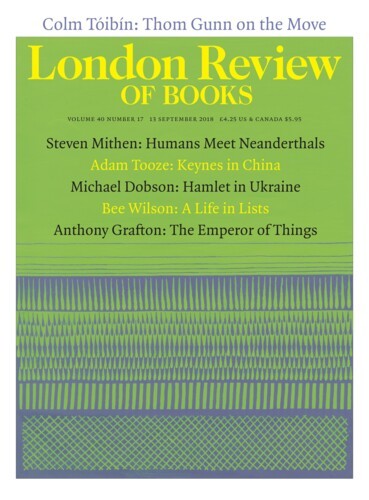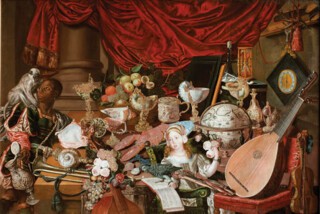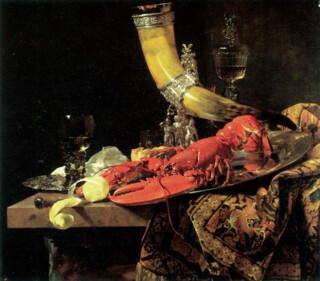The Pastons of Norfolk were an accidentally remarkable family. The survival of their detailed correspondence – the first of its sort in English – means we know the 15th-century Pastons better than we know any medieval king or queen. The letters, first published in 1787, revealed a family on the make. Clement Paston, a yeoman farmer born at the end of the 14th century, set his son up as a lawyer. The lawyer bought land, and his son John inherited more, including Caister Castle, from his wife’s cousin, Sir John Fastolf. The Pastons always married well. They fought to maintain the Fastolf inheritance – in the courts against competing claimants but also with crossbows and poleaxes against the dukes of Norfolk and Suffolk. They came through the disorder of the 15th century intact, swore allegiance to Henry Tudor, gained security of property and found knighthoods, seats in Parliament and minor positions at court. In the 16th century another Clement, a sea captain and courtier, built a great fortune from what was more or less piracy. The reckless strain in the family alternated with the prudent. He married a rich widow and built Oxnead Hall, ten miles north of Norwich. Clement’s great-great-nephew, William, inherited it in 1632.
Six years later William set out on a Grand Tour that would take in the German states, Italy, Athens, Constantinople and Cairo. He built up a magnificent collection, a ‘world of curiosityes’ according to his cousin Thomas Knyvett, which we know about from inventories and wills, and also from the strange, large painting called The Paston Treasure. Its date and artist are unknown but it was almost certainly painted around the time of William’s death in 1663 and commissioned either by him or his son Robert. Having existed in obscurity for centuries (on its donation to Norwich Castle Museum, the last owner warned: ‘the painting is very faded, of no artistic value, only curious from an archaeological point of view’), it is now the subject of a huge research project and accompanying exhibition (at NCM until 23 September).
The painting is a salmagundi. It shows many fine objects from the Paston collection (some of which have been traced for the show), along with musical instruments and books. The flowers, fruit, lobster and swathe of red curtain are commonplaces of Dutch still life; its large and luxurious arrangement puts it in the tradition of pronkstilleven, or ‘ostentatious still lifes’. The sand timer, clock and snuffed-out candle are vanitas motifs – perhaps occasioned by William’s death – though they can hardly be said to dominate the mood of the painting. The two figures, almost subsumed by the host of objects, refer us to portraiture, and genre scenes of everyday life. Whether the Pastons had a black servant is unrecorded. It was becoming fashionable to paint women of nobility with black attendants, and the upturned face and twisting figure of the young man seem angled to some person we cannot see. The girl is probably Robert’s daughter Margaret. Illuminated from the right while all else is lit from the left, she is almost certainly copied from another portrait.
The painter, a Dutchman in East Anglia perhaps, took from memory, and from life, as well as from other images. There were certainly lobsters in the kitchen at Oxnead, if he needed one, though there’s no evidence of a monkey. The African grey parrot on the girl’s songbook is almost identical to one in the painting known as Monkeys and Parrots, now thought to be a slightly earlier work by the same artist. Age, as well as X-ray scanning, can tell us about pictures: pigment has disappeared from the parrot’s foot in places, revealing the lines of the musical clef beneath – the parrot must have been added to the painting after that part was considered finished. In a more orderly composition, its awkward position might have told us that anyway. The objects from the collection were painted first, discretely; each a perfect study. They don’t suffer by comparison with their real counterparts in the exhibition, which stand in a glass case in front of the painting: the cup with the strombus shell, lying on its side; the nautilus cups (in the centre and to the right, by the sand timer); the Indian mother of pearl flask; the silver flagon, pricked and engraved, that the young man holds.
The scene we are presented with, however, is impossible. In order to display its magnificent cargo, the table slopes upwards drastically. The space of the tabletop is a fantasy: the shell cups all seem to touch one another – recession without depth – and cast no shadow. The girl’s chair is lodged in the table; its angle to the chair with the lute all wrong. What does the globe stand on? The cloth whose edge can just be made out beneath the foreground bunch of grapes renders much of the table a uniform pinkish-brown. Everywhere the objects meet, they fail: the lute can’t possibly glance off the globe and the clock and touch the picture frame. This gives the painting a peculiarly flat aspect; it looks more like a collage. We’re used to still life painters demonstrating masterful handling of space. Contemporary paintings by Jan Davidsz. de Heem or Willem Claesz. Heda are not only harmonious arrangements, beautifully lit: their objects speak to one another, often wittily. Even the spaces between them are eloquent. It’s hard to imagine either artist plonking in the little girl, the beloved granddaughter, so unceremoniously – or failing to realise how disproportionately small she would appear.
Was the painter incompetent? He knew how to make compositions coherent: the three bunches of grapes, for instance, are each approached differently to allow for the impression made at receding distances. In the catalogue (a stupendous thing, published by Yale), the awkwardness is put down to the artist working from individual object studies and trying too hard to accommodate his patron’s wishes. In his book on the painting, The Anatomy of Riches, Spike Bucklow more boldly says that ‘Robert dictated the composition … [and] had the upper hand.’* Perhaps Robert, who probably did oversee the painting’s completion, also dictated its design. But Bucklow doesn’t want Robert to be incompetent either: ‘He knew all about linear perspective, but purposefully avoided it … he had visceral experience of the world’s fragmented and unstable nature. Acknowledging that fragmentation and avoiding the illusion of stability in his painting was a brave move.’ Chemical analysis has revealed that at least twenty different pigments were used – an unusually high number – which does suggest Robert’s involvement (he was a keen naturalist and alchemist), or at least access to his well-stocked laboratory.
It can also tell us what the painting ought to look like. Over time the vermillion red and yellow lake pigments have faded, lightening the roses, the lobster, the girl’s complexion and her ribbons, the area behind the lute chair and the curtain. The brilliant gilt metalwork has dulled and the trumpet’s green tassel turned to blue. The painting was almost certainly completed by one hand, though some parts – particularly the area in the top right – are of a lesser quality. Scans have revealed two earlier shapes beneath the clock. Originally a woman stood there; she was painted over with a large silver dish, before that was covered by the clock. The discovery seems to point to family discord at the time of its composition. As a young man, Robert had seriously imperilled the Paston fortune by promising £10,000 to Charles II in exile. William was forced to fund it, in part, through the sale of Caister Castle. In return, he tried to limit Robert’s power after his death, and left much of his collection to his second wife, Margaret. If the woman in the painting was Margaret, Robert may well have wanted to remove her. As for the dish that came afterwards, perhaps it just didn’t look right or was too strong a reminder of the family’s Civil War losses (they had also been forced to hand over much of their silver plate to the Roundheads).
Technological analysis of paintings doesn’t always answer questions, but it can alter them. The changes that were made to The Paston Treasure happened in swift succession – there’s no dust between the layers. The theory that the girl was painted in at a later date has been disproved. There’s much about the painting’s commissioning and creation that can never be settled, and the exhibition, picking up the attitude of the catalogue, makes the gaps in our knowledge part of its subject. Almost nothing is known about the Paston art collection, nor of the great library: such objects were rarely itemised in wills and inventories but treated collectively. The Paston Treasure itself is nowhere recorded.
What is known about the objects in the painting can serve to make them less familiar. The blue and white dish, from which the lobster is sliding (a visual joke of ‘still’ lifes), would have been one of the furthest-flung and most curious items: porcelain was ‘white gold’ – Europeans didn’t learn how to make it until the 18th century. The exotic dress of the young boy might have been borrowed from fanciful masques, but his belt is local callimanco, a glossy patterned fabric made in Norwich. The textile trade was responsible for much of the Pastons’ wealth, as it was for the whole of East Anglia, and connected the region to the Low Countries, the centre of dyeing and weaving. Red dyes came from Eastern alum and cochineal (almost as valuable as silver) until their trade was complicated by antagonisms with the Ottoman world, and then with Rome. Shrewd painters could extract pigments from waste cloth: the red matter in The Paston Treasure’s curtain may have been recycled from a real curtain. There are internal references and relationships between the painted materials, and the materials with which they were painted, whose meaning is now hidden to the average viewer; and there are values – beyond the obvious gold and silver – that might be lost on us. The shells, for instance, were prized for their beauty but also for the cosmological significance of their spirals – microcosms of a rotating universe, or ‘frozen music’, as Bucklow puts it, and evidence of the ‘divine turner’. Gentlemen, even kings, tried their hand at ‘crafts’ (there’s a theory that Robert may have made the sand timer), they played music, if not for an audience, and messed around with chemicals and pigments. Not only was making closely related to knowing but the form and motions of small things like shells could be extrapolated to understand great things.
The 42 contributors to the catalogue seek to expound and bridge this strangeness. They approach the painting from almost every conceivable angle, though the exhibition wears its learning lightly. Both William and Robert Paston were intimates of Thomas Browne, who lived in Norwich and was a significant collector in his own right. In Pseudodoxia Epidemica, his critique of ‘vulgar errors’, Browne uses William’s ‘honourable and ocular testimony’ to dispel the myth that it never rains in Egypt (it was perhaps there, though more likely in a shop in London, that William acquired a magnificent stuffed crocodile: a copy hangs in the exhibition above the Pastons’ Florentine pietre dure table, as the original did at Oxnead Hall). Browne provides a useful avenue into 17th-century thought. Traditional ways of seeing the world were, Bucklow tells us, ‘under assault from political self-interest and expediency on one side, and from scientific speculations and discovery on the other’. ‘Assault’ suggests that not all that was being gained was good. One of the pleasures of Bucklow’s book is his delight in turning things round: linear perspective has its limitations; lead can’t be turned into gold only ‘according to modern science’. In his reading, The Paston Treasure marks a changing moment, a crossroads. We can see this in the figure of the black youth: the British were on the brink of formalising the slave trade, but Africa had many other, richer associations, and black skin didn’t yet designate a different ‘race’ (Browne writes: ‘There is all Africa and her prodigies in us’). The ability to navigate with a compass could lead to great discoveries but also to the loss of other ways of knowing the oceans – ‘sounding’, reading the sea’s phosphorescence, interpreting the bend of the sun’s rays and the knots and swells of waves.
A greater confidence in progress might celebrate the clock – an afterthought in the painting – as the most impressive object. Pendulums had only been introduced a few years earlier: their accuracy made a clock like this a state-of-the-art instrument. It looks down soberly on the excess of the table, whose marvellous creations all display their brilliance on the surface. Was it this sense of wonder that prompted William or Robert to commission the painting? Or was it just showing off? There is something strange about the desire, when you have such a fine collection, to see it replicated; as though trying further to extend the value of the objects. Little Margaret is swallowed up by the family acquisitiveness. And for all that it heralds new worlds, the painting now seems to memorialise the Pastons’ downfall. They never recovered from the Civil War, despite Robert’s best scheming at court (he was ruined by accepting offices that cost a good deal and brought in nothing); his son was on the wrong side of the Glorious Revolution and in 1744 Oxnead was sold in ruins. Many of the artefacts were bought by another Norfolker, John Buxton, through whose descendants the picture came to Norwich.
Or perhaps the commission was a natural extension of the desire to seek new forms for known things. The flagon is decorated with shells; the cup mounts with nymphs, fish, lobsters, singing satyrs, whose songbook is inscribed with the piece ‘Je prens en gré la dure mort’, as well as the Paston coat of arms. There seems no end to this: paintings, after all, were copied into prints; prints made up into books. The artist reused his motifs (parrots and monkeys, accomplished mimics, refer to his imitation of nature). The re-creation of the lute in the painting as part of the research project and the recording of the girl’s music for the first time are a pleasing continuation of this spirit. The exhibition doesn’t present us with the Pastons’ world uncritically (you can listen to the ‘voices’ of everyday people throughout), but it does look to objects to tell us how people thought. This seems appropriate to the 17th-century interest in examining things closely, to the new understanding that was being brought about by telescope and microscope. ‘Perspectives [telescopes],’ wrote Browne, ‘begin to tell tales.’
It also seems appropriate to an artistic tradition that revels in the virtuosic depiction of different surfaces and the games that can be played with painted space: bowls that appear to protrude out of their canvases, grapes we can reach out and touch. This intelligence hadn’t yet set painting apart from other decorative forms, nor is it at its pinnacle in The Paston Treasure. A contemporary of the Paston painter, Willem Kalf, also painted a still life with a lobster slipping from its dish. Unlike The Paston Treasure, Kalf brings us up close to the table’s edge. The twisting forms of lobster and horn cup and lemon peel, their beguiling textures, the instability of the scene, but most of all the delicious details of light flickering on the glasses, the delicate gilt work, the glorious smudge of red reflecting the lobster in the top rim of the horn, make the painting a wonder beyond the wonders it portrays. A century later, Goethe wrote that in Kalf we see ‘in what sense art is superior to nature … if I had to choose between the golden vessels or the picture … I would choose the picture.’ Looking at The Paston Treasure, I would still take the treasures.
Send Letters To:
The Editor
London Review of Books,
28 Little Russell Street
London, WC1A 2HN
letters@lrb.co.uk
Please include name, address, and a telephone number.



